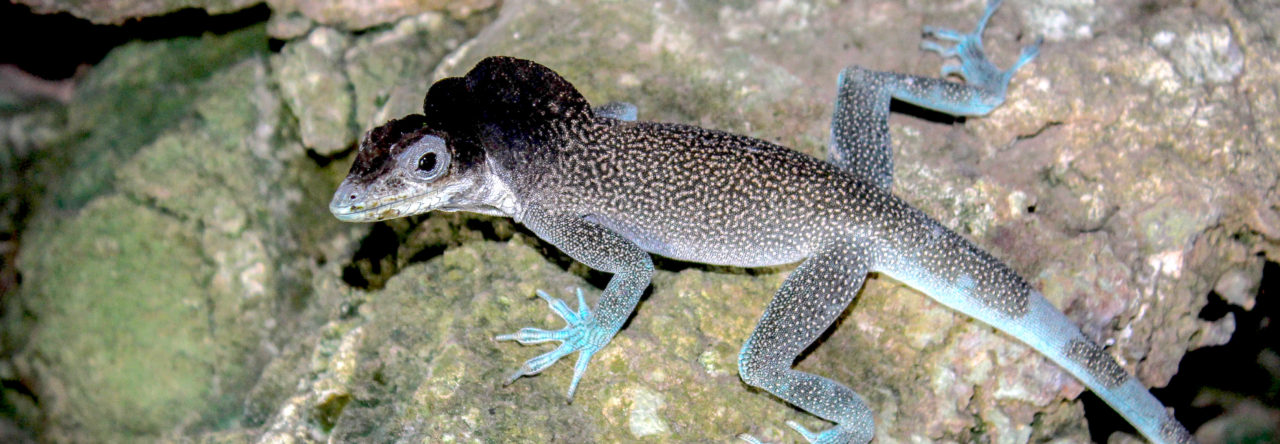I just read another paper that uses the term “ecomorph,” this one in reference to populations of insects. We anolologists know that Ernest Williams introduced the term “ecomorph” in his classic 1972 paper (available here), defining an ecomorph as those “species with the same structural habitat/niche, similar in morphology and behavior, but not necessarily close phyletically.” The terms “ecomorph” and “ecomorphology” are now widely used. Was Williams really the one who coined the term? And is its current use consistent with the ideas he developed?
I discussed these questions in Lizards in an Evolutionary Tree, from which the following is adapted:
A search of the terms “ecological morphology,” “ecomorphology,” and “ecomorph” in JSTOR revealed that the terms were rarely used prior to Williams’ 1972 paper. In contrast to its frequent use in recent years (JSTOR reported 32 papers using the term in the period 1990–2000 and 101 in 2001-2010), “ecomorph” was only used once before Williams’ definition of the term: in a 1954 paper in Systematic Zoology, J.G. Edwards proposed the term “ecomorph” for sympatric and synchronic interbreeding populations showing morphological and ethological differences. The term was proposed to distinguish these populations from allopatric, allochronic populations, for which the term “subspecies” would be appropriate. Why the prefix “eco” was employed was not explained.
“Ecological morphology” and “ecomorphology,” too, were rarely used before Williams’ work (which does not use either of those terms). JSTOR reported that “ecological morphology” was used five times prior to 1972: in a book in German by H. Fitting in 1926, Die Ökologische Morphologie der Pflanzen, which is about environmental forces on plants, according to a review in the Quarterly Review of Biology in 1927; in an obituary of the Russian plant ecologist Boris Aleksandrovich Keller published in Science in 1946; in a paper by Luckan in 1917 discussing the anatomical traits that allowed a plant, the velvetleaf (Abutilon theophrasti), to withstand a drought with little apparent ill effect; in an obscure paleontology paper that I did not look up (Kireeva, 1958); and in van der Klaauw’s (1948) lengthy article, “Ecological morphology” which anticipated much of what is currently studied under the same name. JSTOR only cites one use of the term “ecomorphology” prior to 1972, in a paper from 1902 in which I could not find “ecomorphology” (although I did find “geomorphology”). By contrast, the term was found in 153 papers from 1990–2000 and 466 in 2001-2010 (admittedly, a number of these were in the references section citing a book by that name). Of course, much of the credit for popularizing the term and the approach should go to Karr and James (1975), who were the first to use “ecomorphological,” and who apparently came upon the term independently of Williams (his work was not cited). Prior to Karr and James’ work, “ecomorphological” was only used, according to JSTOR, in a 1957 review of a book on Scandinavian ecology in Ecology, in which the term was used without explanation or definition.
In summary, it appears that Williams, is, indeed, responsible for the term “ecomorph.” The extent to which his work has led to modern concepts and use of “ecological morphology” is less clear.
Finally, I would like to note that many uses of “ecomorph” today are not consistent with Williams’ definition. In many cases, “ecomorph” is used as an equivalent of “ecological specialist.” If a species or clade is found to have traits that represent adaptations to using a particular ecological niche, they are sometimes referred to as an “ecomorph” (e.g., a “rock ecomorph”). However, in Williams’ sense, ecomorph refers not only to morphological and behavioral adaptations to use a particular niche, but also the fact that such adaptations have arisen convergently in multiple lineages. Given that the term “habitat specialist” suffices to label species that have adapted to a particular niche, I propose that “ecomorph” be reserved for the more restrictive situation that Williams initially recognized: convergent adaptation to the same ecological conditions.
- Evolution in Real Time on Lizard Island - March 23, 2025
- Spider Snags Adult Anolis osa - March 22, 2025
- An Homage to the Green Anoles of New Orleans - March 21, 2025



6 Pingbacks